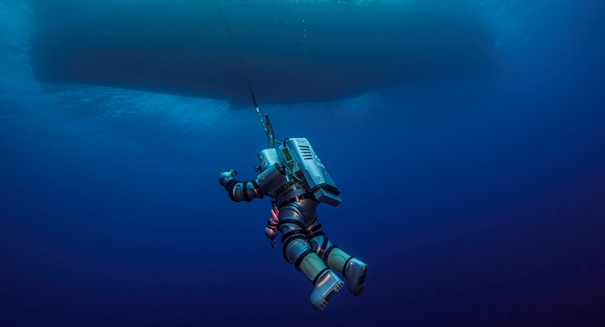
New underwater exo-suit makes debut archaeology dive.
A brand new exo-suit for underwater research hit the waves for the first time on October 7 off the coast of Greece. The dive suit was submerged 200 feet below the surface of the Aegean Sea to continue exploration of a 2000-year-old shipwreck near Antikythera Island.
Though the wreck was discovered almost a hundred years ago, it remained largely inaccessible due to its submergence under 55 meters of water. Today it can be, and has been, explored in traditional scuba gear, but divers are severely limited by available airtime and time spent depressurizing on return to the water’s surface.
The exo-suit keeps divers safe in a protective bubble of surface pressure within a metal suit, making it less like scuba and more like piloting a small submersible with arms and legs. Edward O’Brien of Woods Hole Oceanographic Institute had the honor of performing the first operational dive of this new exo-suit from Nuytco Research Limited.
Two weeks worth of unfavorable weather cancelled several dives that were supposed to take place, but on the seventh this exo-suit was finally able to demonstrate its effectiveness on an archaeological site.
Outside the water the suit weighs 500 pounds and it had to be lowered into the surf on a winch from the Hellenic Navy ship Thetis. Once submerged it became a feather-weight and O’Brien was able to recover a few artifacts during the dive.
A tether does connect the suit to the surface vessel, but it carries only video and communication lines. Air is provided to the diver via an in-suit rebreather, which, in addition to holding oxygen, scrubs carbon dioxide from the diver’s exhalations so the air can be recycled, allowing for a maximum 50 hours of breathing at depth. This means that even if the tether is cut, the suit will still maintain its ability to operate independently and protect the diver inside.
Leave a Reply